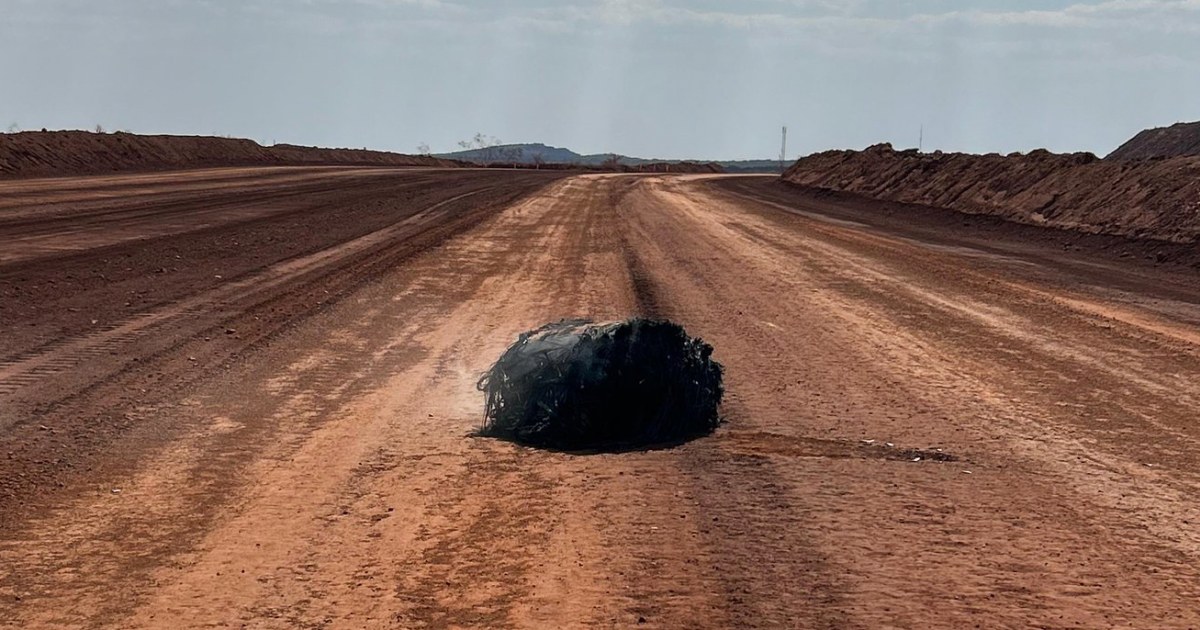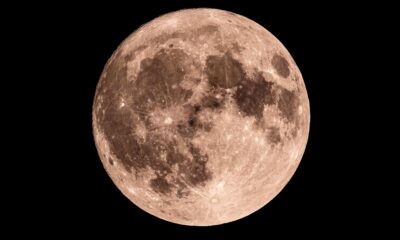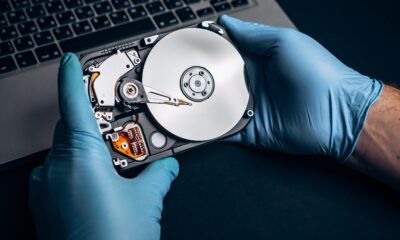World
Large Chunk of Suspected Space Debris Discovered in Australia

A significant piece of suspected space debris has been located in the remote Pilbara region of Western Australia, as confirmed by the Australian Space Agency on October 9, 2023. This charred object, which was discovered by mine workers on a secluded access road, is believed to be a spent rocket part, although its exact nature and origin remain uncertain.
The Australian Space Agency indicated on social media that the debris is likely a “propellant tank or pressure vessel from a space launch vehicle.” Despite the object’s unclear dimensions and weight, local authorities have assessed that it does not pose a threat to public safety. The agency is collaborating with local officials and other space agencies to investigate further.
This incident highlights ongoing concerns regarding space debris, as government and private sector entities often allow defunct rocket parts and satellites to burn up upon re-entry into the atmosphere. While such events are relatively common, it is unusual for debris to land on land, particularly in sparsely populated regions. Most of the Earth is covered by oceans, making landfall a rare occurrence.
Context of Space Debris Concerns
The growing accumulation of space debris poses risks to active spacecraft and astronauts. For instance, last summer, a 90-pound slab of space debris was found on a mountain trail in North Carolina. This object was later identified as part of a service module from a SpaceX Crew Dragon capsule that had returned astronauts from the International Space Station.
In another case, a 1.6-pound piece of metal crashed through a home in Naples, Florida, in March 2024. Investigations revealed that this fragment originated from a cargo pallet intentionally released from the International Space Station to ensure it burned up during re-entry.
Currently, tens of thousands of larger pieces of space debris, along with millions of smaller fragments, are orbiting Earth. These objects travel at speeds of up to 18,000 mph, which can threaten operational satellites and pose safety risks to astronauts aboard the International Space Station. Experts have long warned about the dangers of overcrowding in space and its potential consequences.
Efforts to Address Space Debris
Recognizing the urgency of addressing this issue, various space agencies, including NASA, have funded research to explore methods for cleaning up orbital debris. The Australian Space Agency has committed to promoting sustainable activities in outer space, focusing on debris mitigation. The agency continues to advocate for international cooperation in this area, emphasizing the importance of long-term sustainability.
As space exploration continues to expand, the international community faces the challenge of managing the growing problem of space debris. The recent discovery in Western Australia serves as a reminder of the complexities and risks associated with increasing space activity.
-

 World1 week ago
World1 week agoMass Production of F-35 Fighter Jet Drives Down Costs
-

 World7 days ago
World7 days agoGlobal Air Forces Ranked by Annual Defense Budgets in 2025
-

 Top Stories7 days ago
Top Stories7 days agoNew ‘Star Trek: Voyager’ Game Demo Released, Players Test Limits
-

 Top Stories7 days ago
Top Stories7 days agoDirecTV to Launch AI-Driven Ads with User Likenesses in 2026
-

 Science1 week ago
Science1 week agoTime Crystals Revolutionize Quantum Computing Potential
-

 Lifestyle6 days ago
Lifestyle6 days agoDiscover Reese Witherspoon’s Chic Dining Room Style for Under $25
-

 World7 days ago
World7 days agoElectrification Challenges Demand Advanced Multiphysics Modeling
-

 Science6 days ago
Science6 days agoWaning Crescent Moon: What to Expect on October 17
-

 Entertainment7 days ago
Entertainment7 days agoFreeport Art Gallery Transforms Waste into Creative Masterpieces
-

 Health7 days ago
Health7 days agoResearchers Uncover New Insights into Cancer Mortality Causes
-

 Top Stories6 days ago
Top Stories6 days agoToshiba Announces 40TB HDD for 2027, Faces Stiff Competition
-

 Health6 days ago
Health6 days agoGavin Newsom Critiques Trump’s Health and National Guard Plans









